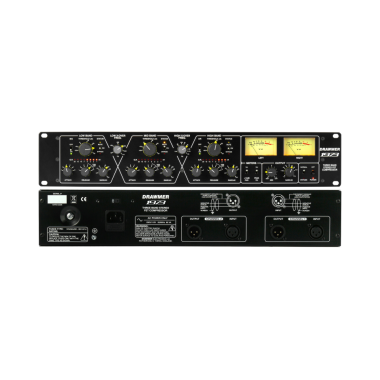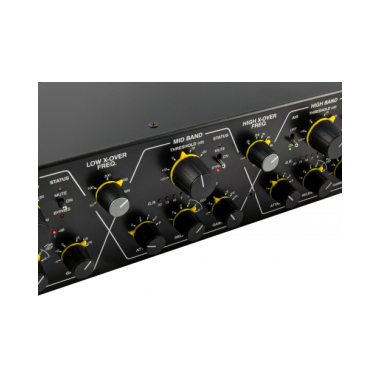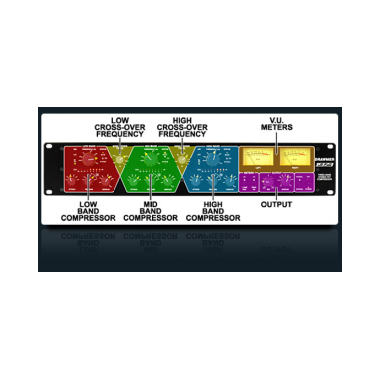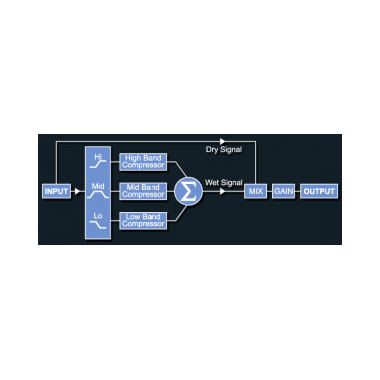- Flyline Music AG
Hauptmenü:
×
- index
-
Produkte
-
Mikrofone
-
3DIO
- Microphones
- Pro Microphones
- Accessoires
- AEA
- Antelope Audio
- Avantone Pro
- Bock Audio Design
-
Cascade Microphones
- Short Ribbons
- Long Ribbons
- Specialty Ribbons
- Accessoires
- Cloud Microphones
- Chandler Limited
- Coles Electroacoustics
- Dizengoff Audio
-
Earthworks
- Vocal Series
- PianoMic Series
- Drum Series
- SR Series
- TC Series
- QTC Series
- Periscope Series
- Measurement Series
- Accessoires
- Ear Trumpet Labs
- Granelli Audio Labs
- Josephson
- Kahayan Pro Audio
- Luke Audio
- Manley Labs
- Mojave Audio
- Placid Audio
- Roswell Pro Audio
- Royer Labs
- Sontronics
- Stager Microphones
- Townsend Labs
- Vanguard Audio Labs
- Warm Audio
-
3DIO
-
Studio Equipment
- A Designs Audio
- ACME Audio
- AEA
- AMS Neve
- Analoguetube
-
Antelope Audio
- Discrete Synergy Core Interfaces
- Discrete Interfaces
- HDX & USB Interfaces
- Thunderbolt & USB Interfaces
- Stereo Converters
- Master Clocks
- Mic Preamps
- Monitor Controller
- API
- Asparion
- Audified
- Avalon Designs
-
BAE
- Guitar Tools
- 500 Series
- Deskop Mic Preamps
- Modules & 19"
- Bettermaker
- Big Bear Audio
- Black Box
-
Black Lion Audio
-
500 Series
- Modules
- Rack
-
Outboard
- Mic Preamps
- Compressors
- Studio Clocks
-
500 Series
-
BURL Audio
- B1 500 Series Modules
- B2 Bombers
- B26 Orca
- B32 Vancouver
- B16 Mothership
- B80 Mothership
-
Chandler Limited
- Abbey Road Series
- 500 Series
- Germanium Series
- Rack Mixer
- Guitar Pedals
-
Cranborne Audio
- Outboard
- Desktop
-
500 Series
- Modules
- Racks
- Crane Song
-
Daking
- Preamplifiers
- Compressors
-
Dangerous Music
- Converters
- Controller
- Router
- Summierer
- Outboard
- Dave Hill Designs
- Dizengoff Audio
-
Drawmer
- Monitor Controller
- Sound Protection
- 60ies / 70ies Series
- MXPro Series
- Gates & Compressors
- Digital Management
- Signal Splitters
- Signal Distribution
- Power Amplifier
- Earthworks
-
Elysia
- 500 Series Modules
- 19" Outboard
-
Empirical Labs
- 500 Series
- 19" Outboard
- Plug-In
- Flock Audio
-
Fredenstein
- MixCube
- HD Reference Preamps
-
500 Series
- Artistic Modules
- F600 Modules
- Racks
- Vintage Analog Series
- Outboard Equipment
- Metering
- Grace Design
- Great River Electronics
-
Heritage Audio
- RAM Series
- Elite Series
- 500 Series
- Table Top Series
- 19" Outboard
- Classic Series
- Highland Dynamics
-
IGS Audio
- 500 Series
-
19" Outboard
- Spring Reverb
- Compressors
- Equalizers
- Preamplifier
- Interphase Audio
-
Inward Connections
- 500 Series Modules
- 19" Outboard
- JDK Audio
-
Kahayan Pro Audio
- Summing Mixers
- Amp/Speaker Selectors
- Preamplifier
-
Kush Audio
- 500 Series Modules
- 19" Outboard
-
La Chapell Audio
- 500 Series Modules
- 1/2 19" Outboard
- 19" Outboard
-
Lindell Audio
- 500 Series Modules
- 500 Series Racks
-
Lisson Grove
- 19" Outboard
- Little Labs
- Locomotive Audio
-
Looptrotter
- 500 Series Modules
- Outboard Equipment
- Modular Console
- Mäag Audio
-
Manley
- Mic Pres / Combos
- Equalizers
- Dynamics
- Maselec
-
Mercury Recording Equipment
-
500 Series
- Modules
- Racks
- Power Supplies
- Accessoires
- Vacuum Tube Outboard
- Solid State Outboard
- Custom Shop Outboard
-
500 Series
- Millennia
-
Mytek Digital
- Brooklyn Series
- Converters
- Private Q2
-
Overstayer
- 19" Outboard
- Pete's Place Audio
-
Phoenix Audio
- Desktop
- 500 Series
- 19" Outboard
- 1/2 19" Outboard
- Pultec
-
Purple Audio
- MFTwenty5 Rack Mixer
- 500 Series
- 19" Outboard
- Q2 Audio
-
Retro Instruments
- 500 Series Modules
- Portable Amplifier
- Outboard Equipment
-
Roger Schult
- 500 Series Modules
- 19" Outboard
-
Power Supplies
- Roll Music Systems
- Rupert Neve Designs
-
Serpent Audio
- 500 Series Modules
- 19" Outboard
-
Shadow Hills Industries
- 500 Series
- 19" Outbaord
-
Solid State Logic
- Audio Interfaces
- Small Format Consoles
- 500 Series
- Analogue Processors
- X-Rack System
- Digital Equipment
- Speck Electronics
-
Spectra 1964
- 19" Outboard
- Desktop
- 500 Series
- Standard Audio
-
Teegarden Audio
- DI Boxes
- Mic Preamps
-
Teknosign
- Box Line
- Preamplifier
- Summing Mixers
- Power Conditioner
- Patchbays/Adapters
- Thermionic Culture
-
TK Audio
- 500 Series Modules
- 19" Outboard
- Tonelux
- Tube Tech
- UK Sound by BAE
-
Universal Audio
- UAD-2 Live Rack
- OX The Amp Top Box
- Audio Interfaces
- UAD-2 Accelerators
- Analog Hardware
- Useful Arts Audio
- Vertigo Sound
- Warm Audio
- Wave Distro
- Weight Tank
- WesAudio
- Whitestone Audio
-
Monitoring
- Auratone
- Avantone Pro
-
Aviom
- FUGU Speakers
- Livemix
- Unity Audio
-
Electronic Sound
-
Mode Machines
- 19" Equipment
- Desktop
- MIDI Tools
- Pedals
- Sequential
-
Studio Electronics
- Boomstar Modular Synthesizers
- Boomstar Modular Eurorack
- Boomstar Desktop Synthesizers
- 19" Analog Synthesizers
-
Vermona
- Modular Module
- Synthesizer
- Drums & Percussion
- Effektgeräte
-
WMD
- Effect Pedals
-
Eurorack Modules
- Aperture
- Arpitecht
- Arpitecht Triad
- Buffered Multiple
- Chimera
- Compressor
- DVCA
- Fracture
- Geiger Counter
- Invert Offset
- Metron
- Micro Hadron Collider
- MSCL
- MM Envelope
- MM Extension
- MM VCA
- Overseer
- Performance Mixer
- PM Mutes Expander
- PM Channels
- PDO MKII
- PDO Triple Bipolar VCA
- Pro Output
- QAAF
- SSM
- SSM Expand
- Synchrodyne
- Synchrodyne Expand
- TRSHMSTR
-
WMD / SSF Collaboration
- Monolith Synthesizer
- Eurorack Modules
-
Mode Machines
-
Accessoires
-
ATR
- MDS-36 Tapes
- Precision Analog Master Tapes
-
Bittree
- Dante Patchbays
- TT Patchbays
- XLR / Jack Patchbays
- TT Patch Cables
- Accessoires
- Cloud Microphones
-
Latch Lake
- micKing®
- Xtra Booms
- iOxbooms
- Parts
-
Pete's Place Audio
- Pan 60
- Recording The Masters
- Scott Liebers
-
Sterling Modular
-
Multistation
-
Plan Consoles
- Racking Systems
-
Multistation
-
Teknosign
- Power Conditioner
- Patchbays/Adapters
-
Vovox
- sonorus
- link
- initio / textura
- sonorus XL
-
Zaor Studio Furniture
-
ATR
-
Mikrofone
- News
- Preislisten
- Links
- Kontakt
Produkte > Studio Equipment > Drawmer > 60ies / 70ies Series
Features
Technische Daten

Modelle / Preise
Zubehör
Hersteller
1973
3 Band Stereo FET Compressor
- Stereo 3 Band FET Kompressor
- Threshold, Gain, Attack/Release pro Band
- Gain Reduction Meter pro Band
- Softknee FET Kompressor Design
- Parallel Mix-Regler, Output Gain
- Variable Bänder mit Mute und Bypass pro Band
- BIG und AIR Modes
- 2 Analoge VU Meter
The award winning 1973 is a multi-band compressor with the versatility, control and ability to shape sound that no full band compressor could ever provide and at an affordable price.
Expanding on the renowned range of dynamics processors Drawmer introduce an affordable Three Band Stereo FET Compressor that every engineer will completely appreciate - the 1973. The culmination of 30 years of development and experience, the 1973 combines the functionality and control of the world class Drawmer S3 with the familiarity and quality of the illustrious 1960 and 1968, providing three bands of transparent, intuitive compression for the price of a conventional single full band compressor.
How does the 1973 differ from a full band compressor? In essence, the 1973 comprises a set of crossover filters that splits the audio signal into three frequency bands, each split signal then passes through its own compressor and is independently adjusted, after which the signals are recombined and the final Wet/Dry mix and levels can be adjusted. The advantage is that one band's compression has no affect on the others.
What's so good about a three band compressor anyway? The 1973 can pull off amazing feats that a single-band compressor could never accomplish. For example, it can easily prevent an acoustic guitar, cello, or double bass from sounding boomy on low notes without thinning the highs.
Are you recording a vocal track that sounds too shrill? The timbre can easily be altered without eliminating detail and clarity. Adding heavier compression in the bass band can add to the thickness and richness of the voice, in the mid band raspiness is controlled, whilst compression to the high band can give sizzle and definition to an otherwise bland voice. In addition, sibilance can easily be tamed.
In a mastering situation, having independent control over each band can resolve a problem mix, pulling out individual instruments, brightening the brilliance/air or making the bottom end of a mix sound huge while simultaneously avoiding "pumping" or "breathing" artifacts and increasing headroom.
Intuitive Layout
Multiband compressors can be intimidating and difficult to use due to the number of controls and poor lay out, with this in mind, the 1973 has been designed to be as simple, familiar and intuitive as possible whilst still giving complete control over the audio.
The front panel consists of three near identical compressor bands, flowing left to right, with the Variable Crossover Frequency knobs seperating them. To the right are the large, illuminated V.U. Meters, with Output controls underneath.
Mix Control - Pricisely Control the Amount of Compression Applied!
Incorporated into the 1973 is the 'Mix' Control. This acts like a 'parallel compression' effect that mixes the Wet (compressed) and Dry (original) signals to provide a simple and exact way of controlling the amount of compression used - all with the turn of a single knob.
One criticism of multiband compression is that it is possible to take the effect too far and ruin a mix - this is easily prevented with the 1973 by the use of the Mix control just by mixing in less of the wet signal and more dry. By the same token, the mix control can add more compression simply by adding more of the wet signal. It's that simple!
1973
3 Band Stereo FET Compressor
Input Impedance: 20 kOhms or greater
Max. Input Level: +26dBu
Output Impedance: 100 Ohms
Max. Output Level: +25dBu into 10 kOhms load
Frequency Response: < 5 Hz - 51 kHz, -1dB
< 3 Hz - 70 kHz, -3dB
Crosstalk: < -80dB @ 1 kHz
Noise @ Unity Gain: -87dB @ 22 Hz - 22 kHz
THD + Noise @ 1 kHz: 0.03% @ 0dB
0.07% @ 10dB
0.5% @ 20dB
Power Requirements: 115-230 V, 50-60 Hz, 60VA
Dimensions:
Width: 482mm, 19"
Height: 88mm, 2U
Depth: 270mm
Weight: 4.2kg

1973
3 Band Stereo FET Compressor
Vovox 6.3302: sonorus direct S Mikrofonkabel, 3.5m
Vovox 6.3203: sonorus protect A Instrumentenkabel, 3.5m
Vovox 9.0001: textura Steckerleiste, 6x CEE 7/7
Teknosign Noise Buster: Netzfilter 19" 1U
Drawmer Electronics Ltd.
Rotherham, England
You may not realise it but you have been listening to Drawmer for the last 30 years, almost every time you turn on the radio, watch t.v. or go to a gig. Since the introduction of the DS201 noise gate in 1982 Drawmer products have consistently remained the unequivocal choice of producers, engineers and artist’s, and, as such, have been installed in almost every major recording studio, live venue and broadcast facility throughout the world. Drawmer products are the engineer’s indispensable tools that elevates good sound into truly stunning!
The company, which is based in Yorkshire, England, was founded by Ivor Drawmer, whose passion was designing audio circuits. "The whole thing started in 1981," explains Drawmer. "I had been playing keyboards with bands in Yorkshire, but that wasn't going so well and also I wasn't getting any younger. With the encouragement of friends I built a small batch of stereo delay lines, which I called the Multitracker, and that was the start of Drawmer."
The DS201 Noise Gate
In 1982 Drawmer revolutionised gating by introducing the DS201 Dual Noise Gate, the world's first 'frequency conscious' noise gate. "It came about from working with a producer called Phil Chapman, who wanted me to build him a gate. Without doing any research I built this thing that switched on, held for a certain amount of time and then just switched off. In practice of course it was no good at all, so I then spent some time going around studios looking at how gates were being used. What really surprised me was how long engineers spent fiddling with gates trying to get them optimally set up and I realised very quickly that a better design was needed." The DS201's unique High-Pass and Low-Pass key filters, comprehensive envelope control and ultra-fast attack time has since made it the 'industry standard' gate throughout the world. The 201 transformed the gate from what had previously been a simple "on/off" device to a powerful creative tool playing a significant role in modern music production. "It was the kind of unit that people discovered uses for and it immediately enabled engineers to do the things they'd always dreamed of with minimum fuss," says Drawmer.
Very little has changed to the design of the DS201 over the years, and Ivor Drawmer claims it sells as well now as it did back in the early 1980s. "It's astounding where they all go, but to date we've sold tens of thousands of units," he says.
Copyright 2017. All rights reserved.









